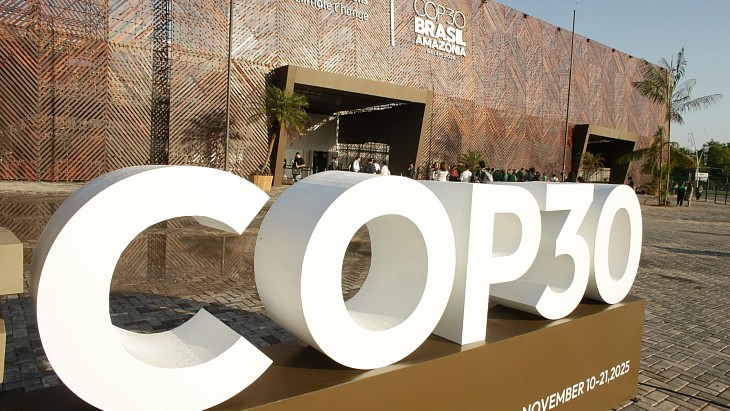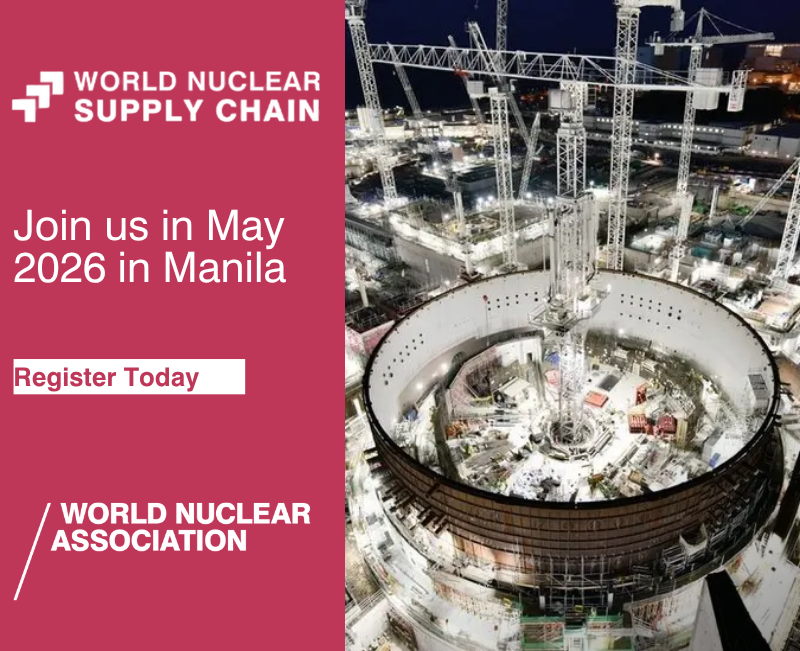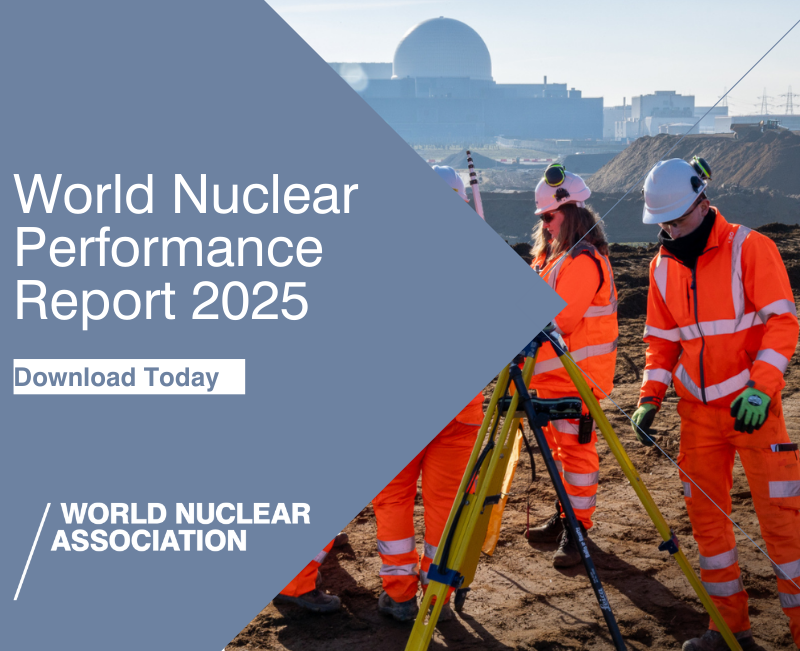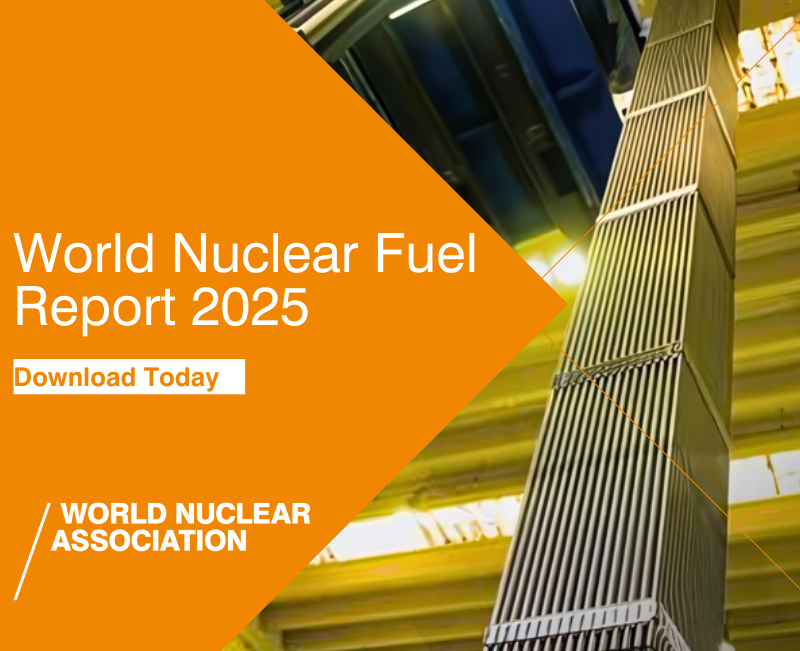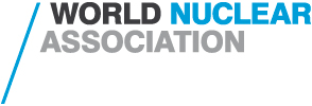The Communication on the European Commission's eighth Nuclear Illustrative Programme (PINC) says that installed nuclear capacity is projected to increase from 98 GW in 2025 to 109 GW by 2050. It estimates that more than 90% of electricity generated in the European Union (EU) by 2040 will be decarbonised and says "for some EU countries, nuclear energy is an important component of decarbonisation, industrial competitiveness, and security of supply strategies".
It says that at the end of 2024 there were 101 nuclear power reactors operating across 12 EU member states, which provided about 23% of electricity generation. The previous PINC was published in 2017, at which time it projected there would be 80 GW of capacity in 2025. The actual figure is higher, at just below 100 GW, with the difference being attributed to more existing plants continuing to operate than had been expected.
In the new document it says that lifetime extensions will be crucial in determining future nuclear capacity. Although the base case is 109 GW in 2050, it estimates that if all existing reactors extended their service life to 70 or 80 years and all planned new build projects are delivered, installed capacity could reach 144 GW by 2050. It also cites estimates of between 17 GW and 53 GW capacity from small modular reactors (SMRs).
The EUR241 billion is made up of EUR205 billion on new build and EUR36 billion on lifetime extensions, meaning that "while actual lifetime extensions will determine the installed capacity by 2050, they account only for a minor share of investment needs".
The assessment - which will be published in its final form after discussion among member states and the European Economic and Social Committee - is intended to give "a comprehensive, fact-based overview of nuclear development trends, as well as the scope of investment needs across the EU. The assessment is in line with the EU's decarbonisation targets, the REPowerEU Plan and Clean Industrial Deal goals".
Dan Jørgensen, European Commissioner for Energy and Housing, said: "To truly deliver the clean energy transition, we need all zero- and low-carbon energy solutions. Nuclear energy has a role to play in building a resilient and cleaner energy system. Ensuring the necessary framework conditions will allow the EU to keep its industrial leadership in this sector while also upholding the highest safety standards and responsible management of radioactive waste."
Policy, regulation, financing
The EC says that there needs to be cooperation between regulatory authorities to speed up licensing, saying it "recommends Member States planning to use nuclear energy to consider forming a 'regulatory coalition of willing countries', as part of which they might converge their regulations or agree to mutually recognise their licensing decisions".
It also calls for more efforts to develop infrastructure for disposal of used nuclear fuel and radioactive waste and decommissioning, and urges more exploration of the potential "multiple recycling of used fuel by manufacturing a new fuel (MOX) for nuclear reactors".
There is also a need for "upskilling the existing workforce, engaging new talents and supporting start-ups" as well as development of the European supply chain.
On financing, the European Commission says member states "should consider investing early and developing policies to maintain a sustainable industrial ecosystem for nuclear energy".
It adds: "The instruments set out in the revised Electricity Market Design, enable Member States to support project developers through re-allocating electricity market and construction risks. Projects’ financing may rely also on Power Purchase Agreements (PPAs); in those cases, Member States may design support instruments targeting the producer in the given PPA. Other jurisdictions, eg the US and the UK, are testing other innovative instruments to further manage construction risk, eg by adapting the regulated asset base model, an option which some Member States have recently considered as well."
"The Commission will provide guidance to Member States on how to design Contracts for Difference for energy-related projects, including their potential combination with Power Purchase Agreements, in line with the state aid rules."
The assessment also recognises the potential for nuclear in decarbonising district heating schemes and industrial processes, and also in radioisotope production. It concludes: "To thrive, the EU nuclear supply chain needs stable long-term commitments, greater standardisation levels and enhanced cooperation. Investing in the competitiveness of the EU nuclear industry and strengthening its supply chain is essential, with the ambition to operate worldwide."
Emmanuel Brutin, Director General of Nucleareurope, the Brussels-based trade association, said: "We are delighted to see the Commission recognise the multitude of benefits which nuclear brings to Europe ... however, the EU now needs to put in place a clear action plan covering policies and financing mechanisms which will help deliver on planned investments. It must also ensure a technology-neutral approach across all policies."
A Nucleareurope-commissioned report published earlier this month said that with a generating capacity of around 106 GWe, the EU's nuclear sector contributes EUR251.2 billion per year to the bloc's economy and generates yearly public revenues of about EUR47.6 billion, with more than 883,000 jobs sustained.

_41039_79183.jpg)



_23621.jpg)
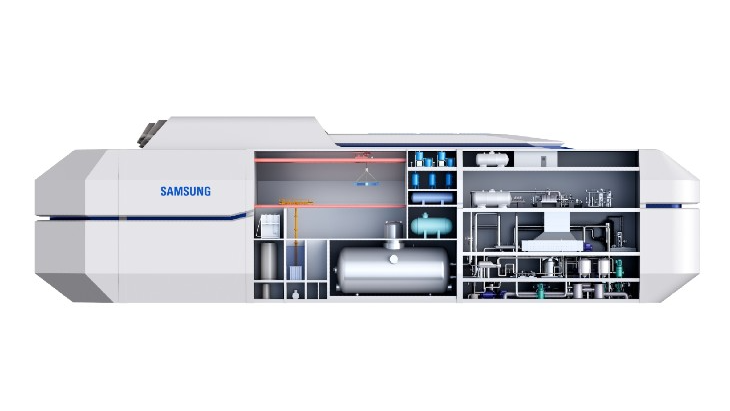
_63865.jpg)
_18570.jpg)
